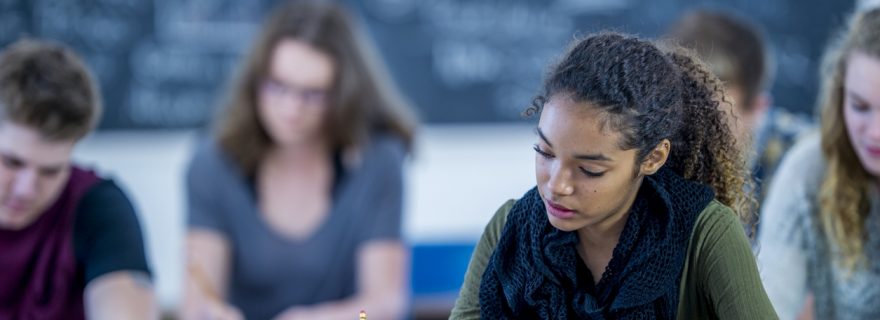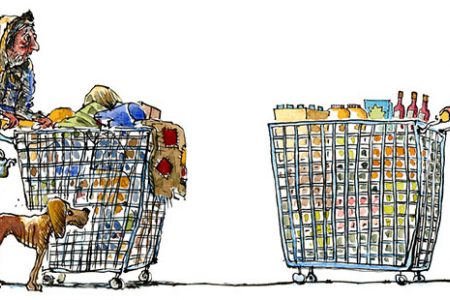Autism and social inclusion at high school; a case of weak or strong ties?
Weak ties contribute to a sense of belonging, so how does that work for autistic teens at school? Isn’t it a fact that autistic pupils do not fancy small talk and rather stay alone? Better autism awareness can contribute to changing such misconceptions.
April is International Autism Awareness Month, with the kickoff on April 2nd of International Autism Awareness Day. One of the most important aspects for non-autistic people to become aware of is that autistic people share some common features but are also very diverse. They are certainly not a homogeneous group. In fact, they can even possess opposite desires or needs from one another. Here, we present outcomes on the desire for social connections based on conversations with autistic high-school students.
Weak ties
When I (first author) did an internship during my Psychology studies at Hofstra University (NY), and I was lost on campus while trying to get to my first African American History class, it was the gardener Jerome, who told me to hop on the small electrical car to bring me to the right building just in time. Jerome and I had met occasionally here and there, and we had started saying “Hi” to each other, which of course started a few times with the typical American greeting “How are you doing?”, which wasn’t meant to be answered seriously, but I didn’t know that at first. I developed a number of these so-called ‘weak ties’ and they gave me a sense of belonging at a new university in a country I had never been before.
Mark Granovetter was the first to publish about these weak ties (1973), as compared to strong ties (partner, family, close friends). It turns out that these weak ties mean a lot to people. Not only do they contribute to a sense of belonging, but they update you with the latest informal information (gossip); they offer you new ways of thinking that you had not heard of before, they thus stimulate creativity, and through all this, you are implicitly building up a network that appears more valuable when it comes to finding a new internship for example.
Do autistic teens want weak ties?
Some autistic adolescents, however, do not fancy these weak ties. They avoid the queue in the canteen during break time, they wait for everyone to be gone before they get their bicycle out of the bike shed. They also find it difficult to have small talk, thus building up these weak ties. It is especially autistic girls who might invest in building up ties, strong or weak, but this can cost a lot of energy that is not necessarily visible from the outside, nor might they feel successful. Social camouflaging takes its toll, and stress levels can go up whilst trying to figure out what is expected next, or when is the moment to casually and acceptably walk away. Some autistic adolescents do mostly feel safe and comfortable with those whom they share strong ties with, as these interactions are more predictable. They feel safe with family, or one close friend, but shy away from weak ties. At school, they might avoid eye contact and interactions with others where possible. Nevertheless, a quiet, specially designated room at school, where they can be among others who also avoid socially (too) busy environments, might also give these teenagers the opportunity to socially connect at school and possibly develop new ties, either weak or strong.
Common interest
Other autistic high school teens, on the other hand, love small talk and are quite proficient in these kinds of conversations, which are usually short, positive, and pleasant. Actually, these autistic teens can be very good at it, especially when they share a mutual interest in a certain topic. As goes for everyone, with or without autism, a common interest in green energy or horses can put two people who casually meet at the same level. In fact, autism might now even be of added value. The high level of knowledge that many autistic teens develop when a topic has caught their interest, can be a welcome source of information for someone who is new at the stables and taking his or her first horse riding class. Moreover, it will contribute to the new rider’s sense of belonging in this new place. For the autistic teen, these kinds of weak ties create an important social network. A clear win-win situation.
Autism Awareness
It is a common misconception that autistic teens do not desire social connections, because they often seem to have no interest in the eyes of the non-autistic peers. Yet, what autism awareness is about, is non-autistic people reaching out and finding this common ground for enhancing weak ties, thus creating a more socially inclusive environment; yet keeping always in mind the huge diversity within the autistic community and especially the diverse interests that autistic boys and girls show regarding a desire for social ties.
For more information on our research project on social inclusion for autistics pupils in school in collaboration with the Nederlandse Vereniging voor Autisme (NVA) and the Academische Werkplaats Autisme, see the AWA onderwijs webpage (in Dutch).
If the aim is to increase a sense of belonging also for autistic teens, this might simply start with asking them, see outcomes of our new publication (in Dutch): In het blauw naar school op World Autism Awareness Day?






